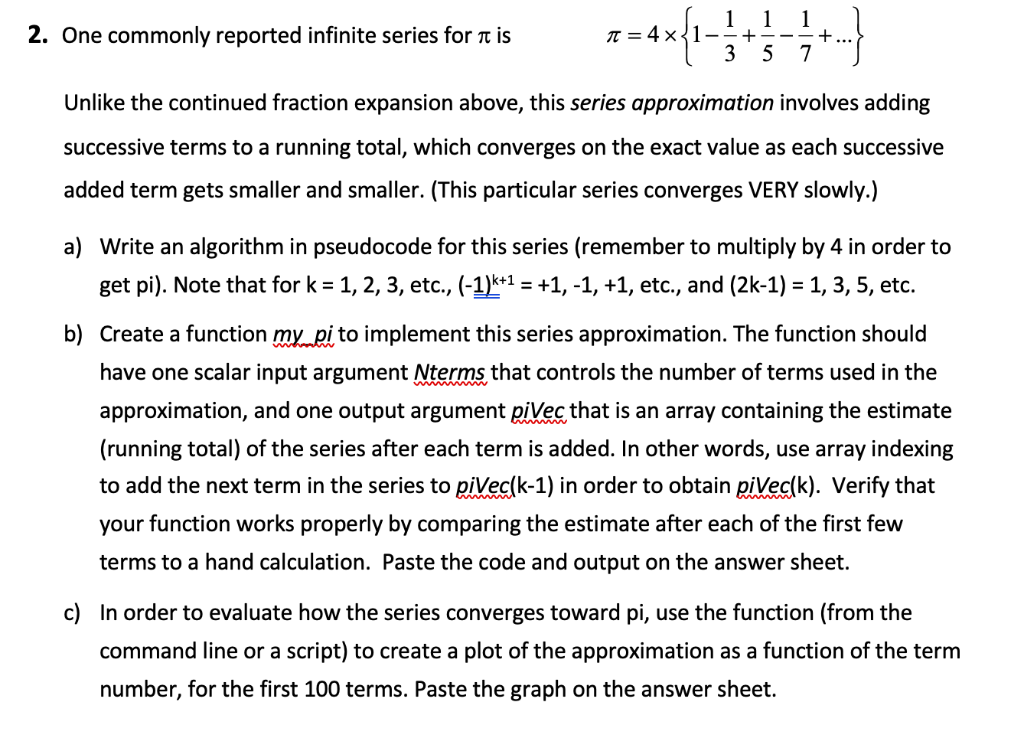Answered step by step
Verified Expert Solution
Question
1 Approved Answer
.4xH.Ht 2. One commonly reported infinite series for Tt is Unlike the continued fraction expansion above, this series approximation involves adding successive terms to a

Step by Step Solution
There are 3 Steps involved in it
Step: 1

Get Instant Access to Expert-Tailored Solutions
See step-by-step solutions with expert insights and AI powered tools for academic success
Step: 2

Step: 3

Ace Your Homework with AI
Get the answers you need in no time with our AI-driven, step-by-step assistance
Get Started


